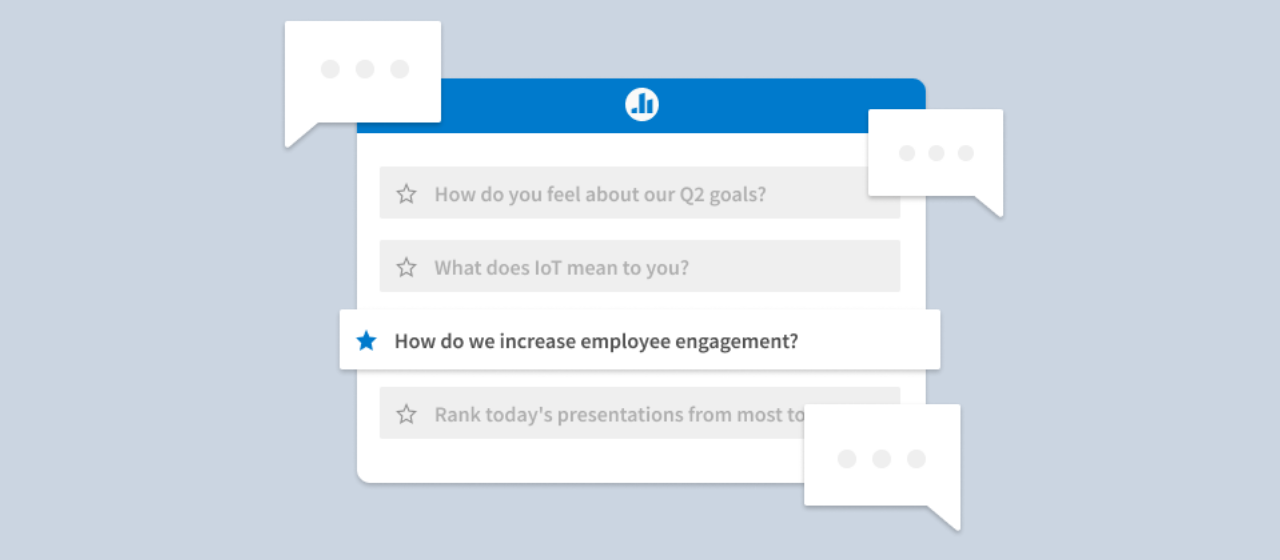13 Employee Experience Strategies to Improve Talent Retention

We've all seen and felt it firsthand in our roles: the back-to-back meetings with no lunch breaks, working well after 5 p.m. to finish work, and an ongoing sense of burnout.
As companies try to keep up with the pace of the market, employees are constantly under pressure to deliver with a high standard. But over time, employees stop enjoying their work, become less productive, and disengage from all activities. They work through the motions due to a dissatisfying employee experience (EX).
While the overall employee experience comprises all the touchpoints in their daily work, like technology and peer-to-peer interactions, what companies need to optimize for is the “human experience.” They need to craft an EX strategy that recognizes the pressures of modern work while championing work-life balance, wellness, and work satisfaction.
If you're unsure where to start, we've compiled a list of 13 employee experience strategies you can implement in your organization today.
What is an employee experience strategy?
An employee experience strategy refers to a company's approach to creating positive employee experiences. It includes everything from their physical interactions to the workplace culture.
The goal is to create an experience that leads to better engagement, productivity, and retention, ultimately benefiting the business’s bottom line.
It impacts the seven stages of the employee lifecycle, which are:
- Attraction: This is the first interaction potential employees have with a company. It relates to the company's brand, reputation, and public perception. You need to create a positive image that attracts the right talent.
- Recruitment: This happens once a potential employee decides to apply and they step into the recruitment phase. It involves the application process, interviews, and feedback. A positive experience here would include clear communication, respectful treatment, and a seamless process.
- Onboarding: After selection, the onboarding phase ensures new hires are introduced to the company's work culture, values, and operational procedures. A successful onboarding experience helps new employees feel welcome, integrated, and prepared.
- Development: This stage includes training programs and skill or career development opportunities. These programs make employees feel valued and invested in.
- Retention: Many factors like work environment, job satisfaction, relationships with peers and superiors, and work-life balance impact talent retention. Positive experiences at this stage lead to higher loyalty and lower employee turnover.
- Exit: Employees might leave for reasons that aren’t related to your organization. So create an offboarding process that is respectful, and constructive. It's an opportunity to gather feedback and leave a lasting positive impression.
- Advocacy: Even after employees leave, they can act as ambassadors for the brand. Alum networks and events can result in talent referrals, business partnerships, and potential rehiring.

13 effective employee experience strategies to create a better workplace
We spoke to several HR leaders, founders, and consultants to determine the most successful employee experience strategies. Here's a list of examples you can use too:
1. Implement a solid onboarding program
Your onboarding program should go beyond a mere introduction to the company. Instead, facilitate an open discussion on your company’s culture, values, and goals.
Pair new hires with mentors within their team or department so they get a 360-degree view of how the team and company function. Also, set clear objectives for the first 30, 60, and 90 days so they know what's expected of them and how to get there.
Regularly checking in with them allows them to share feedback and modify the onboarding process in real time.
For example, at Poll Everywhere, we conduct onboarding surveys before onboarding, at the end of Week 1, at the end of Week 5, and after 90 days to get a pulse of how new hires are doing.
2. Create employee recognition programs
Employees who feel seen tend to perform better. Public appreciation goes a long way in enabling this, so create a program that caters to this need.
Martyna Jasinska, HR specialist at ePassportPhoto, says, “Adopting a merit-based system in the office rewards proficient workers who value their time. If the employee can realistically do what they're supposed to in six hours, not eight, keeping them at the office is a lose-lose scenario. The employee grows bored and frustrated, and the company has to deal with unhappy employees.”
She warns that the system might not always work as some employees might need more time to do things or might view the policy as one-sided. But those who felt that it suited them remained loyal for a longer period and provided positive reviews.
3. Use employee feedback to drive change
Employees are on the front lines of engagement initiatives, meaning they have a better insight into whether they work. It’s best to go straight to the source and check in regularly.
You can do this by conducting pulse surveys, creating an open-door policy, or having one-on-one interviews to gather more feedback.
“Feedback is a gift,” says Kelly Poston Beckner, vice president of human resources at MBO Partners. “We use monthly pulse surveys to gauge our employees' sentiment regularly. We have feedback loop processes around each survey to ensure we review the feedback data at the executive and manager levels, build action plans, and communicate the results and actions to the employees.”
This strategy has yielded excellent results for MBO Partners. Their turnover rates have remained low for the past few years, with voluntary turnover dropping by over 45%. Plus, the overall participation rate for the survey has increased to 70%, indicating that this approach is a hit for their employees.
However, each piece of feedback might not be constructive from the company’s point of view. Act on feedback that pushes the company’s goals forward so you strike a balance between employee needs and organizational goals.
4. Implement breaks for casual conversations
Too much work doesn’t just make your employees burn out but also makes them feel like they’re just a cog in the machine. This is why you need to create a space where they can have informational chats and bond with their peers/managers.
Jamie Sieja, director of marketing at Flex HR, says that biweekly coffee breaks have changed how her employees feel.
“We get to see one another online and share our personal and team wins and give kudos to each other, which builds individual confidence and company loyalty,” Sieja says. “Since we’ve implemented these, productivity is steady, employees seem happier and are motivated to work—building trust, accountability, general efficiency, and innovation is enhanced. This has resulted in better employee retention too.”
Another way to do this is by having team-building exercises or company retreats.
5. Let employees “craft” their roles
Job crafting lets employees choose their path with respect to their roles. They can customize certain parts of their position to align with their strength, passion, and values. They might change the tasks they're responsible for or how they perceive their responsibilities. For example, if they’re a junior financial consultant who wants to do more strategic work instead of only execution, they might add similar responsibilities under supervision to their plate to get practical experience.
Theresa Fesinstine, founder of Culture Makers, says, “Job crafting empowers employees to find deeper meaning and satisfaction in their work, leading to increased engagement.”
Engage in open conversations to identify these aspects and provide your team members with a list of responsibilities that are fixed and flexible. This way, you can adjust based on their interests and ensure important tasks get done.
6. Ensure management is supportive
Many employees struggle with an unsupportive work environment due to managers or team members. If you implement policies encouraging a positive culture based on good manager-employee relationships, this will be easier to achieve.
Andrea Meyers, director of benefit services at WorkSmart Systems, recommends that managers lead with empathy. For example, if an employee is experiencing health issues or losing a loved one, their productivity and energy will be low. Approaching such a situation with empathy will make a world of difference to them.
“Adopting a balanced professional and personal mindset shows that employee well-being matters,” Meyers says. “By making a continuous effort to create an understanding environment where employees feel confident in outlining their needs, such as flexibility or time off, HR departments foster trust with their employees,” says Meyers.
7. Provide access to engaging resources
Sometimes, the best lessons are learned outside of the workplace and in places where you expect it the least. Offering your employees various resources can encourage more meaningful conversations and creative ideas.
For instance, Buffer implemented an unlimited Kindle Books policy where the company gifted employees any book. All they had to do was fill in a Google Form to receive a book of their choice.
Remotive founder Rodolphe Dutel, who was responsible for implementing this initiative at Buffer, mentioned that it's best to ask employees first if they're interested in such an initiative. Run a feedback poll to gauge interest and then roll it out.
As for roadblocks, Dutel says, “The upside is asking employees whether they want it anonymous or whether they want it to be shared with a team because if you share that you were given a book from an employee saying how to save your marriage, this may be a little bit tricky. Every time we let employees decide what books they want in one order, we’ll also ask them whether they want to share it with the team because it may be inspiring to see that your colleague has been reading a book that you enjoy yourself.”
Need a polling solution that’s easy to deploy? Try out Poll Everywhere.
8. Use employee lifecycle analytics to identify gaps
The employee lifecycle is filled with multiple interactions, each of which can impact how employees perceive your company. For example, an internal dispute could affect how they interact with their peers and managers.
For this reason, Tara Furiani, the CEO of Not the HR Lady, recommends using the “Employee Life Cycle Approach” to stitch these isolated moments to identify issues.
“This approach allows us to understand each phase of an employee's career within the organization, from recruitment to retirement,” Furiani says. “It's cutting-edge in that it leverages both qualitative and quantitative data to create an employee-centric environment, thereby aligning organizational and individual growth.”
By identifying issues using an employee journey map and curating individual and team-specific action plans, employees get an inside look into how staying with the company benefits them in the long term.
This approach allowed Alamo Drafthouse, a movie theater, to increase retention by 30%, engagement by 25%, and recruitment efficiency by 10%. And employees were excited to come to work and proud to be at a company that cared about their success.
9. Prioritize L&D initiatives
Employees value continuous learning no matter where they go. In fact, 92% of HR managers say improving employee experience is an important training goal in their organization.
Incorporate learning and development (L&D) initiatives tailored to each team or employee, depending on your organizational goals. This allows employees to improve their skills on the job, resulting in better outcomes.
Meyers says, “The ROI in L&D will multiply tenfold over time. Long-term growth opportunities boost confidence, engagement and productivity. Meanwhile, L&D initiatives help HR develop a group of well-qualified employees to lead the organization’s future.”
10. Cultivate a sense of trust in leadership
Leaders play a pivotal role in setting the tone of the workplace. When leadership is transparent, communicative, and consistent in their actions, it cultivates a sense of trust among employees.
Implement programs that bridge the gap between employees and upper management. You can do the following:
- Hold regular town hall meetings
- Offer open-door policies
- Create an open channel for communication
- Create a backchannel for feedback
- Include employees in major decisions
At Poll Everywhere, we host fireside chats with the executive leadership team during our annual retreats to create that sense of community. You can do something similar.
11. Foster an inclusive environment
Diversity, equity, and inclusion (DEI) are mandatory in today's workplace. It fosters a sense of belonging, allowing employees to feel seen, heard, and included.
Companies that don't prioritize DEI will have issues recruiting and retaining top talent. For instance, 37% of job candidates say lacking diversity is a major red flag during the interview process. On the other hand, companies with DEI initiatives that weren't effective experienced a 32% higher chance of resignation.
With this in mind, you need to prioritize DEI initiatives to improve the work environment and avoid losses through additional overhead costs due to long hiring processes. Foster inclusivity by conducting diversity training, setting up affinity groups, and ensuring diverse representation in leadership and decision-making roles.
12. Conduct stay and exit interviews
While exit interviews have been a standard HR practice for years, “stay interviews” are a proactive measure to seek feedback from current employees about what keeps them engaged and what should be improved.
Use an anonymous Survey tool like Poll Everywhere to conduct quarterly or annual employee engagement and employee satisfaction surveys. Ask them about the culture, management practices, and satisfaction with their digital workspace experience.
Additionally, conducting a one-on-one interview with employees leaving the organization can give you another perspective that could've been missed earlier. Use the data from both interviews/employee surveys to improve EX.
13. Use internal communication tools
Employees who communicate better work well together. When you consider that many companies have either adopted hybrid or remote work approaches, communication has become a bottleneck for most teams.
This is where introducing communication channels like Slack, Trello, intranet systems, or even feedback channels help employees. It enables instant sharing of ideas and collaborative working, mimicking the processes of an in-office workplace.
This way, no one is left out of the loop, and they feel a sense of camaraderie even if they don't meet physically.
Use a feedback loop to improve your employee experience
Offering a great employee experience is no longer a luxury but a necessity. Your employees are your greatest asset, so treat them like it. And one way to make them feel included is to ask them for feedback at every stage of the employee journey.
Creating a feedback loop includes employees in every decision, which results in higher satisfaction rates with initiatives you roll out and the functioning of your organization. Employ a tool like Poll Everywhere that allows you to do that whether you're in a meeting, training session, or need to run a quick poll/survey at work.
For example, integrate it with Slack to run an informal poll on potential resources they'd like to get their hands on. Or integrate it with Microsoft Teams to run engagement activities or feedback polls during meetings without taking individual feedback, which can be time-consuming.
The idea is that Poll Everywhere integrates with your existing tech stack and makes it easy to send simple polls or engagement surveys, even in the middle of the day, to consolidate feedback (qualitative and quantitative) in one place.
Ready to scale your remote company culture? This free ebook gives you even more tips and guidance on keeping your remote team engaged, productive, and committed to your company. Even if your current remote work situation is hybrid or temporary, you may want to bring on remote workers or build off-site teams in the future.
